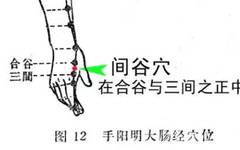Utilizing the Zu San Li (Stomach 36) point alternately with the “Shou San Zhen” and “Zu San Zhen” to treat difficult pain conditions such as neck, shoulder, waist, leg pain, and trigeminal neuralgia, stubborn headaches, and toothaches, the results are remarkably swift and precise, making it said: “Needle insertion brings effect, needle withdrawal leads to recovery.” Zu San Li (Three Li is a vital point; if you want peace, the three feet must be uninterrupted.)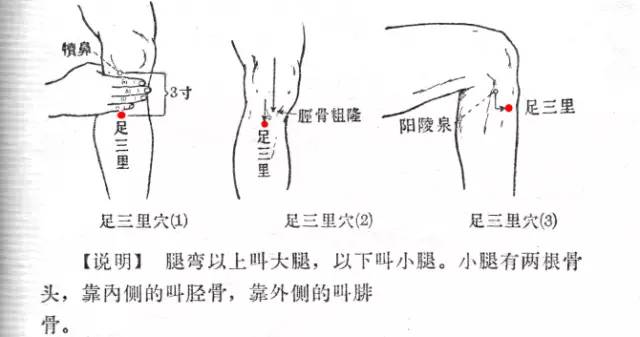 1. The Origins of Hand San Zhen and Foot San ZhenThese acupuncture techniques were named based on their precise efficacy in treating neck, shoulder, waist, and leg pain.2. The Acupuncture Points of Hand San Zhen and Foot San ZhenHand San Zhen consists of: Hou Xi (Small Intestine 5), Zhong Zhu (Triple Energizer 3), Jian Gu (Large Intestine 3).Foot San Zhen consists of: Tai Chong (Liver 3), Nei Ting (Stomach 44), Zu Lin Qi (Gallbladder 41).Jian Gu Point
1. The Origins of Hand San Zhen and Foot San ZhenThese acupuncture techniques were named based on their precise efficacy in treating neck, shoulder, waist, and leg pain.2. The Acupuncture Points of Hand San Zhen and Foot San ZhenHand San Zhen consists of: Hou Xi (Small Intestine 5), Zhong Zhu (Triple Energizer 3), Jian Gu (Large Intestine 3).Foot San Zhen consists of: Tai Chong (Liver 3), Nei Ting (Stomach 44), Zu Lin Qi (Gallbladder 41).Jian Gu Point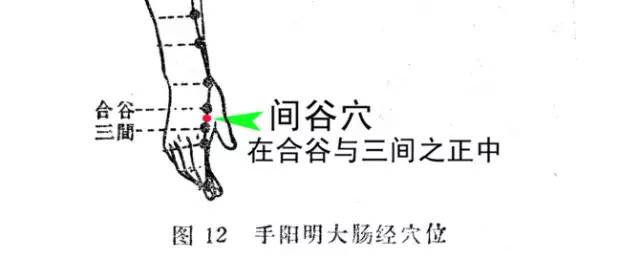 This is a newly discovered point in clinical practice, located at the midpoint of the line connecting Jian Gu and He Gu (Large Intestine 4). Its indications are the same as those for Jian Gu and He Gu.It is particularly effective for pain and numbness in the neck, shoulder, elbow, arm, and fingers. The main treatment scope of Jian Gu and He Gu is summarized as follows: Jian Gu: Treats throat obstruction, pain in the lower teeth, chest fullness, intestinal rumbling, cold and heat symptoms, dry lips, asthma, eye pain, and 17 other conditions.He Gu: Treats high fever, floating pulse, headache, neck stiffness, nosebleeds, and 22 other conditions.The reason Jian Gu can treat the above conditions is due to its higher sensitivity compared to the other two points.Pressing this point with a fingernail or a small stick will elicit a strong sensation, while pressing He Gu will yield a lesser sensation, and Jian Gu even less. The higher sensitivity of this point leads to quicker qi response and faster therapeutic effects, which is indisputable.Zhong Zhu
This is a newly discovered point in clinical practice, located at the midpoint of the line connecting Jian Gu and He Gu (Large Intestine 4). Its indications are the same as those for Jian Gu and He Gu.It is particularly effective for pain and numbness in the neck, shoulder, elbow, arm, and fingers. The main treatment scope of Jian Gu and He Gu is summarized as follows: Jian Gu: Treats throat obstruction, pain in the lower teeth, chest fullness, intestinal rumbling, cold and heat symptoms, dry lips, asthma, eye pain, and 17 other conditions.He Gu: Treats high fever, floating pulse, headache, neck stiffness, nosebleeds, and 22 other conditions.The reason Jian Gu can treat the above conditions is due to its higher sensitivity compared to the other two points.Pressing this point with a fingernail or a small stick will elicit a strong sensation, while pressing He Gu will yield a lesser sensation, and Jian Gu even less. The higher sensitivity of this point leads to quicker qi response and faster therapeutic effects, which is indisputable.Zhong Zhu Located along the pathway of the Shou Shao Yang San Jiao (Triple Energizer) channel, in the depression between the fourth and fifth metacarpal joints on the back of the hand.Its indications include: “Heat disease with no sweating, dizziness, ear deafness, long-term malaria, throat swelling, elbow pain, and five-finger inability to flex or extend,” according to Acupuncture Essentials. Medical Classic of the Golden Mirror states: “Numbness of the limbs, tremors, sudden stroke, inability to speak, epilepsy, and other conditions.”Hou Xi
Located along the pathway of the Shou Shao Yang San Jiao (Triple Energizer) channel, in the depression between the fourth and fifth metacarpal joints on the back of the hand.Its indications include: “Heat disease with no sweating, dizziness, ear deafness, long-term malaria, throat swelling, elbow pain, and five-finger inability to flex or extend,” according to Acupuncture Essentials. Medical Classic of the Golden Mirror states: “Numbness of the limbs, tremors, sudden stroke, inability to speak, epilepsy, and other conditions.”Hou Xi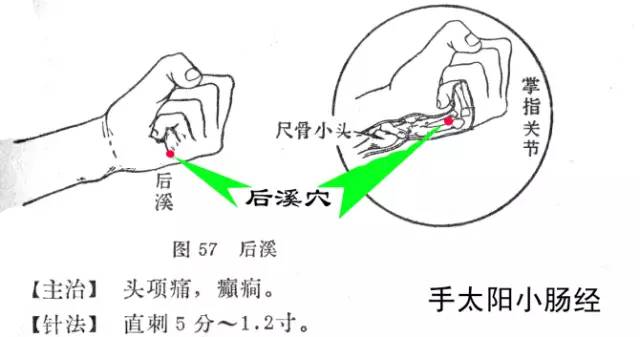 Located along the pathway of the Shou Tai Yang Xiao Chang (Small Intestine) channel, behind the fifth metacarpal head on the ulnar side, in the depression on the outer side of the little finger. Its indications include: “Malaria with cold and heat, red eyes, nosebleeds, chest fullness, neck stiffness, epilepsy, and other conditions.”All three points are located on the back of the hand and are along the pathways of the three Yang channels of the hand. They can be used individually to treat their respective main symptoms, and when combined, they have synergistic effects. Whether using all three points together, two points, or combining with one or two points from Foot San Zhen, the therapeutic effects for pain and numbness in the neck, shoulder, arm, elbow, fingers, back, spine, waist, hips, legs, feet, and toes are particularly ideal.In treating pain and swelling in these areas, or headaches, toothaches, migraines, and rib pain (intercostal neuralgia, gallbladder or liver pain), the use of “Hand San Zhen and Foot San Zhen” often results in immediate relief.The method of locating these three points is based on a loose fist. Next, let’s discuss Foot San Zhen.Foot San Zhen: The indications for the three points Zu Lin Qi, Nei Ting, and Tai Chong are as follows.Zu Lin Qi
Located along the pathway of the Shou Tai Yang Xiao Chang (Small Intestine) channel, behind the fifth metacarpal head on the ulnar side, in the depression on the outer side of the little finger. Its indications include: “Malaria with cold and heat, red eyes, nosebleeds, chest fullness, neck stiffness, epilepsy, and other conditions.”All three points are located on the back of the hand and are along the pathways of the three Yang channels of the hand. They can be used individually to treat their respective main symptoms, and when combined, they have synergistic effects. Whether using all three points together, two points, or combining with one or two points from Foot San Zhen, the therapeutic effects for pain and numbness in the neck, shoulder, arm, elbow, fingers, back, spine, waist, hips, legs, feet, and toes are particularly ideal.In treating pain and swelling in these areas, or headaches, toothaches, migraines, and rib pain (intercostal neuralgia, gallbladder or liver pain), the use of “Hand San Zhen and Foot San Zhen” often results in immediate relief.The method of locating these three points is based on a loose fist. Next, let’s discuss Foot San Zhen.Foot San Zhen: The indications for the three points Zu Lin Qi, Nei Ting, and Tai Chong are as follows.Zu Lin Qi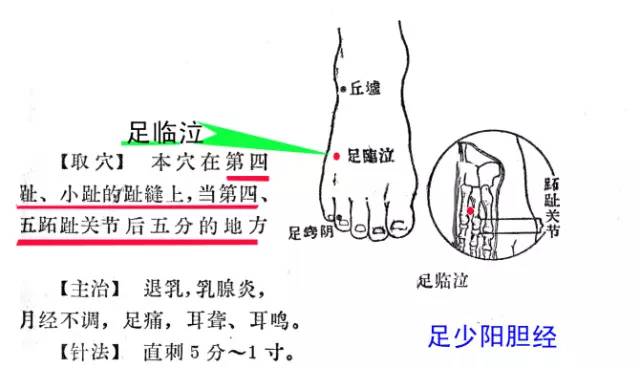 Located along the pathway of the Zu Shao Yang Dan (Gallbladder) channel, in the depression at the junction of the fourth and fifth metatarsals. Its indications include: “Chest fullness, axillary abscess, dizziness, occipital pain, chills, heart pain, and other conditions.”Nei Ting
Located along the pathway of the Zu Shao Yang Dan (Gallbladder) channel, in the depression at the junction of the fourth and fifth metatarsals. Its indications include: “Chest fullness, axillary abscess, dizziness, occipital pain, chills, heart pain, and other conditions.”Nei Ting Located along the pathway of the Zu Yang Ming Wei (Stomach) channel, in the depression between the second and third toes. Its indications include: “Limb coldness, abdominal distension, aversion to sound, chills, throat pain, tooth decay, and other conditions.”There is no mention of treating neck, shoulder, waist, and leg pain in the indications. In clinical practice, needling Nei Ting for pain and numbness in the calves (especially the front side), swelling and pain in the foot, and toe pain is particularly effective.Tai ChongLocated along the pathway of the Zu Jue Yin Gan (Liver) channel, in the depression between the first and second metatarsals, 1.5 inches behind the base of the big toe, where a pulse can be felt with light pressure.Its indications include: “Heart pain, epidemic diseases, shoulder swelling, weakness, waist pain, and other conditions.”Overall, among the six points of Hand San Zhen and Foot San Zhen, only Nei Ting does not have direct references to neck, shoulder, waist, and leg pain, while the other five points have prominent mentions.Based on experience, the indications for Nei Ting are not limited to those mentioned; it is particularly effective for pain and swelling in the front of the calves, foot, toes, and inner and outer ankles, often yielding better results than those listed in ancient medical texts.3. Indications for Hand San Zhen and Foot San ZhenThe causes of neck, shoulder, waist, and leg pain are complex, and sometimes the cause cannot be identified even with advanced imaging techniques like CT or MRI.Not finding a cause does not mean there is no disease. Hand San Zhen and Foot San Zhen have outstanding efficacy for over 90% of neck, shoulder, waist, and leg pain, particularly for trigeminal neuralgia, intercostal neuralgia, headaches, and toothaches.However, a small portion of neck, shoulder, waist, and leg pain may not respond well to Hand San Zhen and Foot San Zhen; the term “effective” here refers to cure or significant improvement, while “ineffective” does not mean no effect.For example, taking painkillers may relieve pain temporarily, but once the effect wears off, the pain returns. Can we say painkillers are ineffective? They are effective in relieving pain but do not eliminate the underlying cause. Hand San Zhen and Foot San Zhen are ideal for pain relief in neck, shoulder, and waist pain, which should also be considered effective.4. Mechanism of Action of Hand San Zhen and Foot San Zhen in Treating Neck, Shoulder, and Waist PainThe action of Hand San Zhen and Foot San Zhen is understood through the meridian pathways of the six acupuncture points.The six points of Hand and Foot San Zhen are located along the three Yang channels of the hand, while only Tai Chong is on the Yin channel of the foot; the other two points are on the Yang channels of the foot.The pathways of the three Yang channels of the hand run from the fingers to the back of the hand, forearm, upper arm, shoulder, neck, and head, connecting with the three Yang channels of the foot, which run from the head to the foot, with Yangming in the front, Shaoyang on the side, and Taiyang at the back.The three Yin channels of the foot run from the foot to the abdomen, while the three Yin channels of the hand run from the chest to the hand, creating a continuous cycle that connects the organs and limbs, facilitating communication between the upper and lower body, and regulating the pathways of various tissues and organs, making the body an organic whole.Regarding Hand San Zhen and Foot San Zhen, the meridian pathways of the six points are illustrated in the accompanying diagram.There are approximately 218 points along the three Yang channels of the hand and foot that can be used to treat neck, shoulder, and waist pain, with about 130 points available; along the three Yin channels, there are about 91 points, with 46 points applicable for neck, shoulder, and waist pain; and along the Governing Vessel, there are 28 points, with 20 points applicable for the above conditions, while the Conception Vessel has no applicable points.In total, there are about 196 points that can treat neck, shoulder, waist, and leg pain. If we include extraordinary points, Tian Ying points, ear points, etc., the number is truly incalculable, making clinical application quite complex.In clinical practice, whenever these symptoms are observed, regardless of the cause, Hand San Zhen and Foot San Zhen are first employed for treatment, generally without additional points. Of course, the indications for these six points may not be as extensive as the 196 points; however, based on experience, the vast majority of conditions within this range can achieve significant results.5. Characteristics of Hand San Zhen and Foot San Zhen1. Few Acupuncture Points.Hand San Zhen and Foot San Zhen consist of only three points each. However, in general, only 1 to 3 points are needed, and it is rare to use both Hand and Foot San Zhen together.2. Quick Needle Insertion.The speed of needle insertion is as fast as lightning, generally not exceeding 1 second.3. Quick Technique.The technique is executed swiftly, with the needle entering the point like a flash. The time from insertion to completion of the technique is about a few seconds.4. Quick Qi Response.The rapid technique leads to a quick qi response, with immediate sensations of heaviness and soreness upon needling.5. Rapid Results.Effects are felt immediately upon needle insertion, with relief occurring within seconds to a maximum of ten seconds.6. Short Needle Retention Time.The duration of needle retention is related to the effectiveness of the treatment. If significant results are achieved, the needle can be removed immediately; if the sensation is poor, the retention time can be slightly longer. In practice, the time from insertion to removal is generally around 1 minute, with 2 to 3 minutes being rare.
Located along the pathway of the Zu Yang Ming Wei (Stomach) channel, in the depression between the second and third toes. Its indications include: “Limb coldness, abdominal distension, aversion to sound, chills, throat pain, tooth decay, and other conditions.”There is no mention of treating neck, shoulder, waist, and leg pain in the indications. In clinical practice, needling Nei Ting for pain and numbness in the calves (especially the front side), swelling and pain in the foot, and toe pain is particularly effective.Tai ChongLocated along the pathway of the Zu Jue Yin Gan (Liver) channel, in the depression between the first and second metatarsals, 1.5 inches behind the base of the big toe, where a pulse can be felt with light pressure.Its indications include: “Heart pain, epidemic diseases, shoulder swelling, weakness, waist pain, and other conditions.”Overall, among the six points of Hand San Zhen and Foot San Zhen, only Nei Ting does not have direct references to neck, shoulder, waist, and leg pain, while the other five points have prominent mentions.Based on experience, the indications for Nei Ting are not limited to those mentioned; it is particularly effective for pain and swelling in the front of the calves, foot, toes, and inner and outer ankles, often yielding better results than those listed in ancient medical texts.3. Indications for Hand San Zhen and Foot San ZhenThe causes of neck, shoulder, waist, and leg pain are complex, and sometimes the cause cannot be identified even with advanced imaging techniques like CT or MRI.Not finding a cause does not mean there is no disease. Hand San Zhen and Foot San Zhen have outstanding efficacy for over 90% of neck, shoulder, waist, and leg pain, particularly for trigeminal neuralgia, intercostal neuralgia, headaches, and toothaches.However, a small portion of neck, shoulder, waist, and leg pain may not respond well to Hand San Zhen and Foot San Zhen; the term “effective” here refers to cure or significant improvement, while “ineffective” does not mean no effect.For example, taking painkillers may relieve pain temporarily, but once the effect wears off, the pain returns. Can we say painkillers are ineffective? They are effective in relieving pain but do not eliminate the underlying cause. Hand San Zhen and Foot San Zhen are ideal for pain relief in neck, shoulder, and waist pain, which should also be considered effective.4. Mechanism of Action of Hand San Zhen and Foot San Zhen in Treating Neck, Shoulder, and Waist PainThe action of Hand San Zhen and Foot San Zhen is understood through the meridian pathways of the six acupuncture points.The six points of Hand and Foot San Zhen are located along the three Yang channels of the hand, while only Tai Chong is on the Yin channel of the foot; the other two points are on the Yang channels of the foot.The pathways of the three Yang channels of the hand run from the fingers to the back of the hand, forearm, upper arm, shoulder, neck, and head, connecting with the three Yang channels of the foot, which run from the head to the foot, with Yangming in the front, Shaoyang on the side, and Taiyang at the back.The three Yin channels of the foot run from the foot to the abdomen, while the three Yin channels of the hand run from the chest to the hand, creating a continuous cycle that connects the organs and limbs, facilitating communication between the upper and lower body, and regulating the pathways of various tissues and organs, making the body an organic whole.Regarding Hand San Zhen and Foot San Zhen, the meridian pathways of the six points are illustrated in the accompanying diagram.There are approximately 218 points along the three Yang channels of the hand and foot that can be used to treat neck, shoulder, and waist pain, with about 130 points available; along the three Yin channels, there are about 91 points, with 46 points applicable for neck, shoulder, and waist pain; and along the Governing Vessel, there are 28 points, with 20 points applicable for the above conditions, while the Conception Vessel has no applicable points.In total, there are about 196 points that can treat neck, shoulder, waist, and leg pain. If we include extraordinary points, Tian Ying points, ear points, etc., the number is truly incalculable, making clinical application quite complex.In clinical practice, whenever these symptoms are observed, regardless of the cause, Hand San Zhen and Foot San Zhen are first employed for treatment, generally without additional points. Of course, the indications for these six points may not be as extensive as the 196 points; however, based on experience, the vast majority of conditions within this range can achieve significant results.5. Characteristics of Hand San Zhen and Foot San Zhen1. Few Acupuncture Points.Hand San Zhen and Foot San Zhen consist of only three points each. However, in general, only 1 to 3 points are needed, and it is rare to use both Hand and Foot San Zhen together.2. Quick Needle Insertion.The speed of needle insertion is as fast as lightning, generally not exceeding 1 second.3. Quick Technique.The technique is executed swiftly, with the needle entering the point like a flash. The time from insertion to completion of the technique is about a few seconds.4. Quick Qi Response.The rapid technique leads to a quick qi response, with immediate sensations of heaviness and soreness upon needling.5. Rapid Results.Effects are felt immediately upon needle insertion, with relief occurring within seconds to a maximum of ten seconds.6. Short Needle Retention Time.The duration of needle retention is related to the effectiveness of the treatment. If significant results are achieved, the needle can be removed immediately; if the sensation is poor, the retention time can be slightly longer. In practice, the time from insertion to removal is generally around 1 minute, with 2 to 3 minutes being rare.
